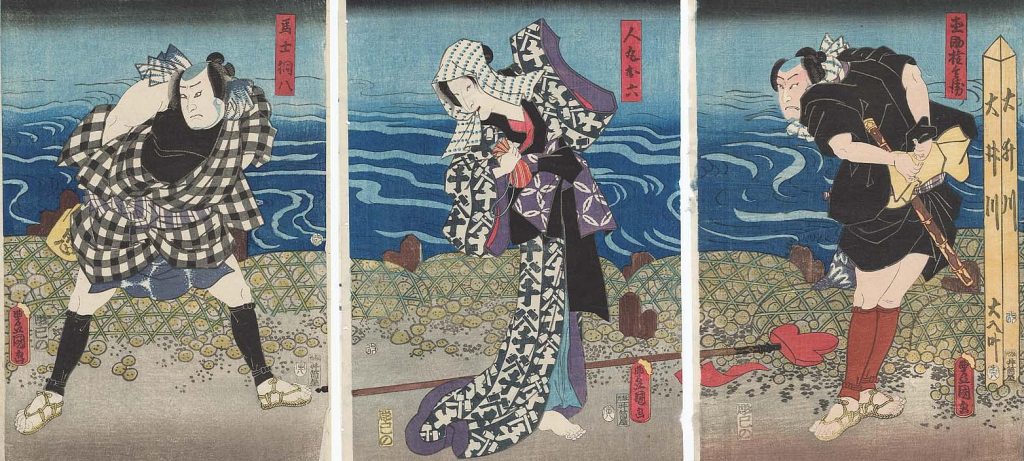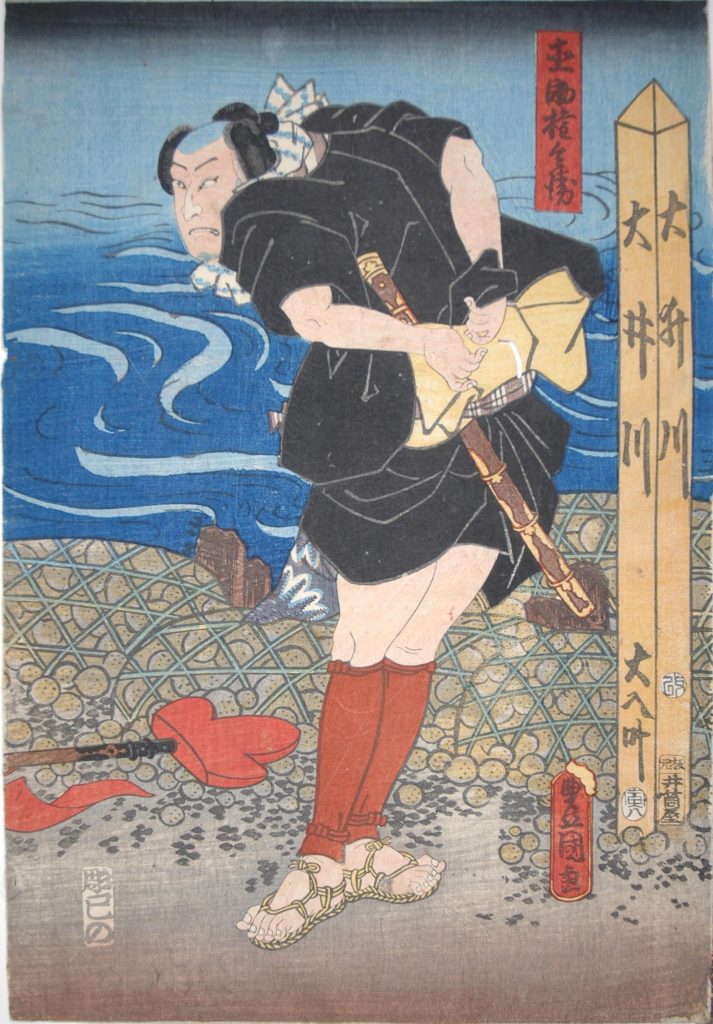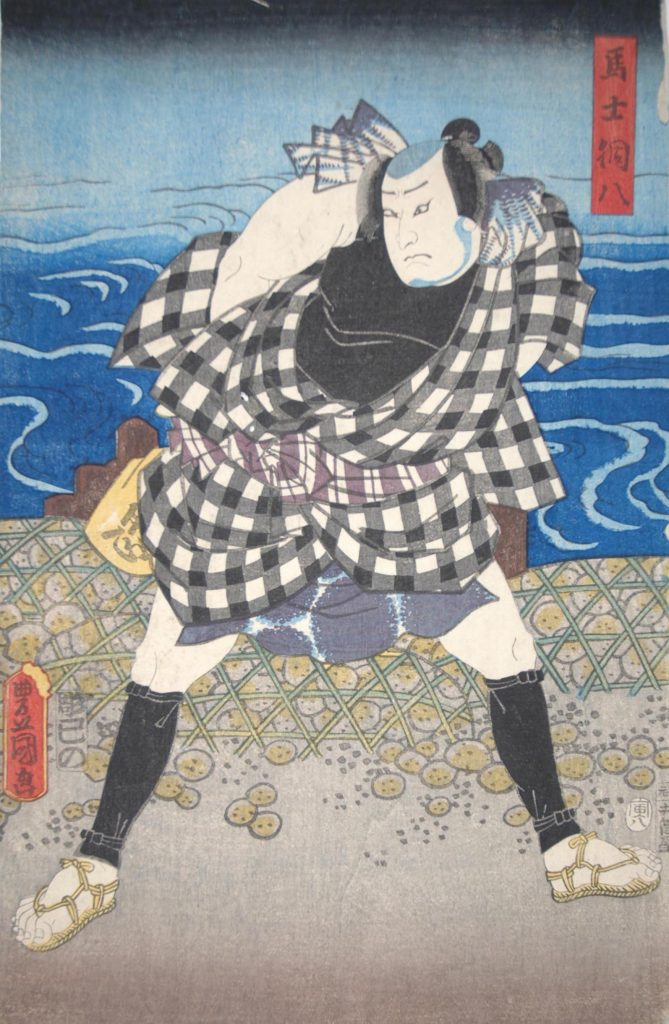Not everyone will be aware of the wealth of surprises hidden in the Sainsbury Centre’s collection of Japanese artworks, however, take a look at two mid-19th century woodblock prints, and you’ll witness the impossible – or at least the remarkably painful. Each work depicts a solitary man standing on the edge of an embankment: one with his back turned, yet with his feet contorted around so that they too face the viewer; the other with his legs splayed, and his muscular arms lost in the jigsaw of his chequered robes. On both of their faces stretches a grimace, one that stands in stirring contrast to the tranquillity of the azure blue river behind.
The drama of Kabuki
Two Kabuki idols in the Sainsbury collection once raised eyebrows on the streets of Japan

Utagawa Kunisada (Toyokuni III), 1854. Photo: 2020 Museum of Fine Arts, Boston. *Full credit at bottom

The exaggerated drama of these images is entirely fitting to their purpose, for they are Kabuki prints – often referred to as “actor prints” – dedicated to the stars of Kabuki, the wildly popular form of Japanese theatre that uses non-realistic patterns of movement and expression. The prints are part of a 20-strong group that entered the collection in 2003, thanks to a bequest from Professor Frank Thistlethwaite, a founding Vice-Chancellor of the University of East Anglia. Their twisted forms capture perfectly the essence of this “actor-centred and highly stylised form of theatre” says Assistant Curator Dr Vanessa Tothill.
The prints were once part of a triptych featuring a feminine figure in the central panel (illustrated at the top of this page). They are riddled with striking details: they are gradation printed, for example, resulting in subtle colour transitions from top to bottom, while the intense blue is from an imported synthetic pigment. And yet at the time they were produced, a single sheet would have been worth just the price of “a double helping of buckwheat noodles”, explains Tothill, and “pinned up on a wall or pasted to a screen” – much like posters are today.

Yet unlike contemporary equivalents, these prints were prohibited from featuring the names of actors, courtesy of a government wary of a public “dreaming about Kabuki actors”, Tothill says. Instead, features such as “particular eyebrow and nose shapes, and wrinkles between the brow” became part of “a new language” developed by artists to help audiences identify them, she adds. In this instance, Arashi Rikan III and Ichikawa Kodanji IV, two prominent actors, are performing in Fifty-three Stations to the Eastern Provinces, a play that drew a full house, as revealed by a signpost beside Kodanji IV.
What sets the Kabuki prints apart from other Japanese works in the Sainsbury Centre’s collection is their embodiment of the zoku aesthetic, which encompassed popular, common and “vulgar” art forms. Unlike literati paintings and religious objects, which fall under the opposing ga category, the more “refined, elegant, highbrow arts”, the Kabuki prints are special precisely because they are “bright and exuberant, like the actors themselves, and have mass appeal”, Tothill explains. When the prints go on display again they are sure to capture widespread attention – just as they did on the streets of Japan over 150 years ago.
*Lead photo credit: Utagawa Kunisada (Toyokuni III), ‘Actors Ichikawa Kodanji IV as Naosuke Gonbei, Bandō Shūka I as Hitomaru Oroku, and Arashi Rikan III as the Packhorse Driver (Mago) Dōhachi’, 1854.